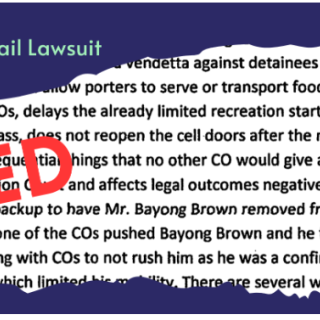Advertisement
Earth has a dozen years to turn climate change around, according to the recent United Nations Intergovernmental Panel on Climate Change Report. Responses to the report give us insight into the political climate, as well as the actual climate, in the Buckeye State.
“Climate change is already happening in the greater Cleveland region,” and it “threatens the biodiversity,” stated Brian Parsons, Director of Planning and Special Projects at Holden Arboretum in the Cleveland area, who spelled out his findings in a 2007 article. Parsons pointed out that “temperatures in the region are increasing” and so are “extreme heat events.” Equally troubling are “heavy precipitation” and also “winters are becoming shorter.”
Well, that doesn’t sound that bad. But Ohioans can expect more flooding from storms, and in the future, increased demands to suck fresh water out of the Great Lakes to share with drought regions in the South and Southwest United States. All this will occur with faster and faster rates of climate change. If we fail to turn it around, Ohio will lose much of the ecological diversity in our flora, fauna and animals.
Environmental reports note that the Earth is now as warm as it was before the last Ice Age 115,000 years ago. What does this mean for our Ohio River basin?
A 2017 U.S. Army Corps of Engineers Report projected that by the beginning of the next century temperatures will increase 7.5 degrees. The Ohio River Valley will experience massive flooding and the complete alteration of its aquatic and terrestrial ecosystem, commonly thought of as climate chaos and disruption. Fifty percent of Ohioans will lack access to clean water.
In a U.S. Senate debate, Ohio Senator Sherrod Brown called climate change “perhaps the greatest moral issue of our time.” His Republican opponent Jim Renacci responded by touting “clean coal” and claimed that Brown was “dissing” his coal-mining granddaddy. Renacci failed to disclose what year his granddaddy died of black lung disease. While Brown called both the U.S. Congress and the President “derelict in their duty” regarding the environmental crisis, Renacci countered with how more fossil fuel extraction produces jobs: “This state has natural assets in coal and in gas, and we should be looking at that – those are jobs!”
Ohio Governor John Kasich is one of the few Republicans who acknowledges climate change as a problem but does nothing practical to stop it. As the Republican Party embraces anti-intellectualism and hostility to scientists, political studies indicate that white guys without education are at the core of Trump’s irrational nationalism.
Trying to comprehend Trump’s reaction to the UN global warming report is like living in a Bill Hicks comedy routine. Hicks recounts how he was openly mocked for reading a nonfiction book in a small town Waffle House, asked “What’re you reading for?” and having a finger pointed at him as a guy announced “We got ourselves a reader!”
Ohio’s answer to global warming is equally anti-intellectual. Kasich and his so-called Republican moderates believe they can frack their way out of the crisis. No fracking way! One of the greatest immediate dangers to the central Ohio ecosystem is from the toxic and radioactive water upstream.
Greg Pace of the Columbus Community Bill of Rights led a tour October 21 of Morrow County, Ohio’s fracking injection wells, just north of Delaware. These decrepit old gas and oil wells, turned into “injection wells,” have little or no modern improvements that would contain the radioactive fracking water.
The rusted and dilapidated hulk of the Mosher Injection Well Unit stands as a monument to the folly of fossil fuels. It last operated as a production well in 1981. Ohio Department of Natural Resources (ODNR) documents reveal that over a million barrels of toxic frack stew have been pumped into the old well as of 2016. The well goes down 3,356 feet – plenty of space to migrate into the central Ohio watershed. Government documents note that an order to plug the well was issued on April 27, 2016 commanded that the well be sealed within 60 days. It remains unplugged.
Two other equally frightening Halloween horror tanks scared the hell out of those on the tour. It hasn’t stopped ODNR from allowing more than a million barrels (over 45 million gallons) of toxic frack water to be injected as of 2017 at the Baughman and Lucas (Fishburn) Unit. The seemingly unfit structure runs 3,350 feet deep. A creepy crypt festering and migrating into Columbus’ watershed. The third site, the Power (Fishburn) Unit, emanated a gas odor – the stench of greed and corruption in the fracking business.
While we only have a dozen years to try to turn climate chaos around, Ohio’s fracking follies will require a millennium just to clean up Columbus’ contaminated water supply.




